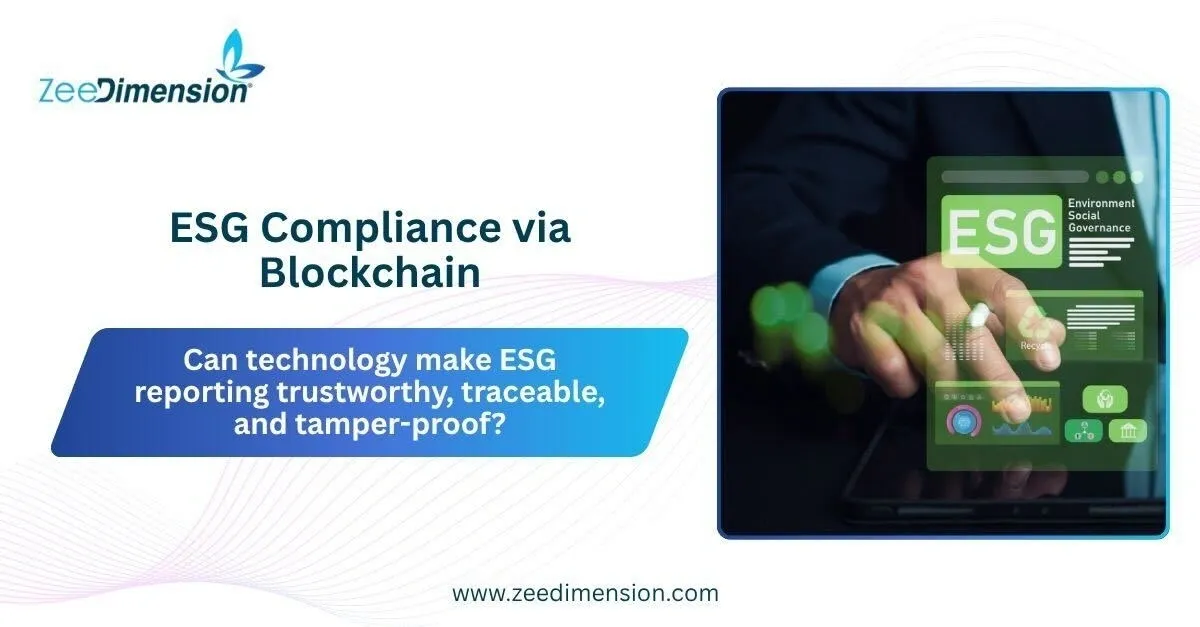
Can technology make ESG reporting trustworthy, traceable, and tamper-proof?
The ESG Problem
Today’s ESG Reports Face Real Challenges:
-
Data silos
-
Manual errors
-
Greenwashing
-
Limited transparency
Stakeholders want proof—not promises.
Enter Blockchain
A Trust Layer for ESG
Blockchain brings:
-
Immutability – Records can’t be altered
-
Transparency – Data is visible and verifiable
-
Automation – Smart contracts enforce rules
-
Decentralization – Removes bias & manipulation
How It Works
Blockchain = Secure, Shared Ledger
Each ESG event (emission, certification, audit) is:
-
Timestamped
-
Verified
-
Stored forever
-
Accessible by stakeholders
Use Case: Carbon Credits
Tokenized credits tracked on blockchain prevent:
-
Double-counting
-
Fraud
-
Greenwashing
Outcome: Verifiable decarbonization.
Use Case: Supply Chain Ethics
Track ESG practices across suppliers:
-
Fair wages
-
No child labor
-
Sustainable materials
Each step = Verified, Blockchain-stored proof.
Use Case: Smart Auditing
IoT + Blockchain = Real-time ESG monitoring
-
Water use
-
Energy efficiency
-
Emission tracking No spreadsheets. Just trusted data.
Why It Matters
For Companies:
-
Better ESG scores
-
Faster compliance
-
Credible sustainability claims
-
Stronger investor trust
Real-World Proof
-
Provenance tracks ethical sourcing
-
Veridium + IBM tokenize carbon credits
-
EY OpsChain offers on-chain ESG reporting
Blockchain in ESG isn’t theory—it’s happening.
Know the Challenges
-
Blockchain doesn’t fix bad data
-
Privacy must be balanced with transparency
-
ESG standards still vary globally
But the potential? Game-changing.
The Future of ESG
What’s next:
-
Tokenized ESG assets
-
Blockchain-based ESG ratings
-
AI + Blockchain for fraud detection
-
Global ESG compliance networks
Final Thought
Blockchain Makes ESG Real
Not just words in a PDF—provable actions on-chain.
If you’re serious about ESG, it’s time to think decentralized.







